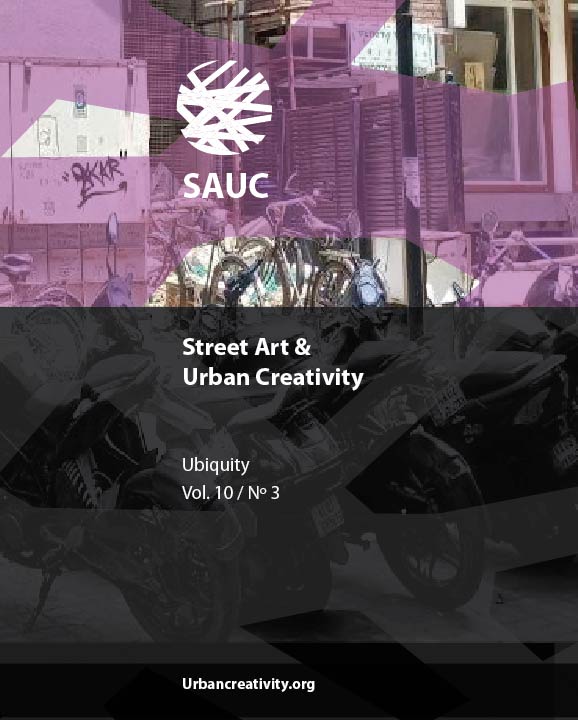Conventionality and Innovation. Détournement in 2011-2012 Protest Art
DOI:
https://doi.org/10.25765/sauc.v7i1.482Abstract
In this paper I look into the conventional side of protest street art in 2011–2012. I am particularly interested in whether there are any rules of formation of revolutionary and protest images, and do any historical conventions apply in protest art nowadays.
Translating the method of horizontal discourse analysis on a micro-scale, I analyze three case studies of reusing and recycling certain symbols and artifacts during protests of the Indignados movement in Spain, the Occupy movement in the United States, and the Egyptian revolution during the Arab Spring. Apart from investigating the visual sphere of protest, in appendix I also show how this research method works on protest slogans.
Thanks to supplementing my research with the situationist theory of détournement strategy, I was able to distinguish three modes of image and symbol reproduction: the historical, the external, and the internal. Reproducing in the historical mode consists of referring to certain symbols or images from the past, in the external mode—to symbols or images that are inherently neutral to the protest. The internal mode of reproduction works within the protest, producing its original symbols, images and mythology, separate for each social movement.
In conclusion, the historical and the external modes of reproduction are generally responsible for the conventional visual components of protest, internal mode on the other hand—for more distinctive, innovative ones.
Downloads
Global Statistics ℹ️
|
192
Views
|
63
Downloads
|
|
255
Total
|
|
Downloads
Published
How to Cite
Issue
Section
License
Those authors who publish in this journal accept the following terms:
-
Authors retain copyright.
-
Authors transfer to the journal the right of first publication. The journal also owns the publishing rights.
-
All published contents are governed by an Attribution-NoDerivatives 4.0 International License.
Access the informative version and legal text of the license. By virtue of this, third parties are allowed to use what is published as long as they mention the authorship of the work and the first publication in this journal. If you transform the material, you may not distribute the modified work. -
Authors may make other independent and additional contractual arrangements for non-exclusive distribution of the version of the article published in this journal (e.g., inclusion in an institutional repository or publication in a book) as long as they clearly indicate that the work was first published in this journal.
- Authors are allowed and recommended to publish their work on the Internet (for example on institutional and personal websites), following the publication of, and referencing the journal, as this could lead to constructive exchanges and a more extensive and quick circulation of published works (see The Effect of Open Access).













